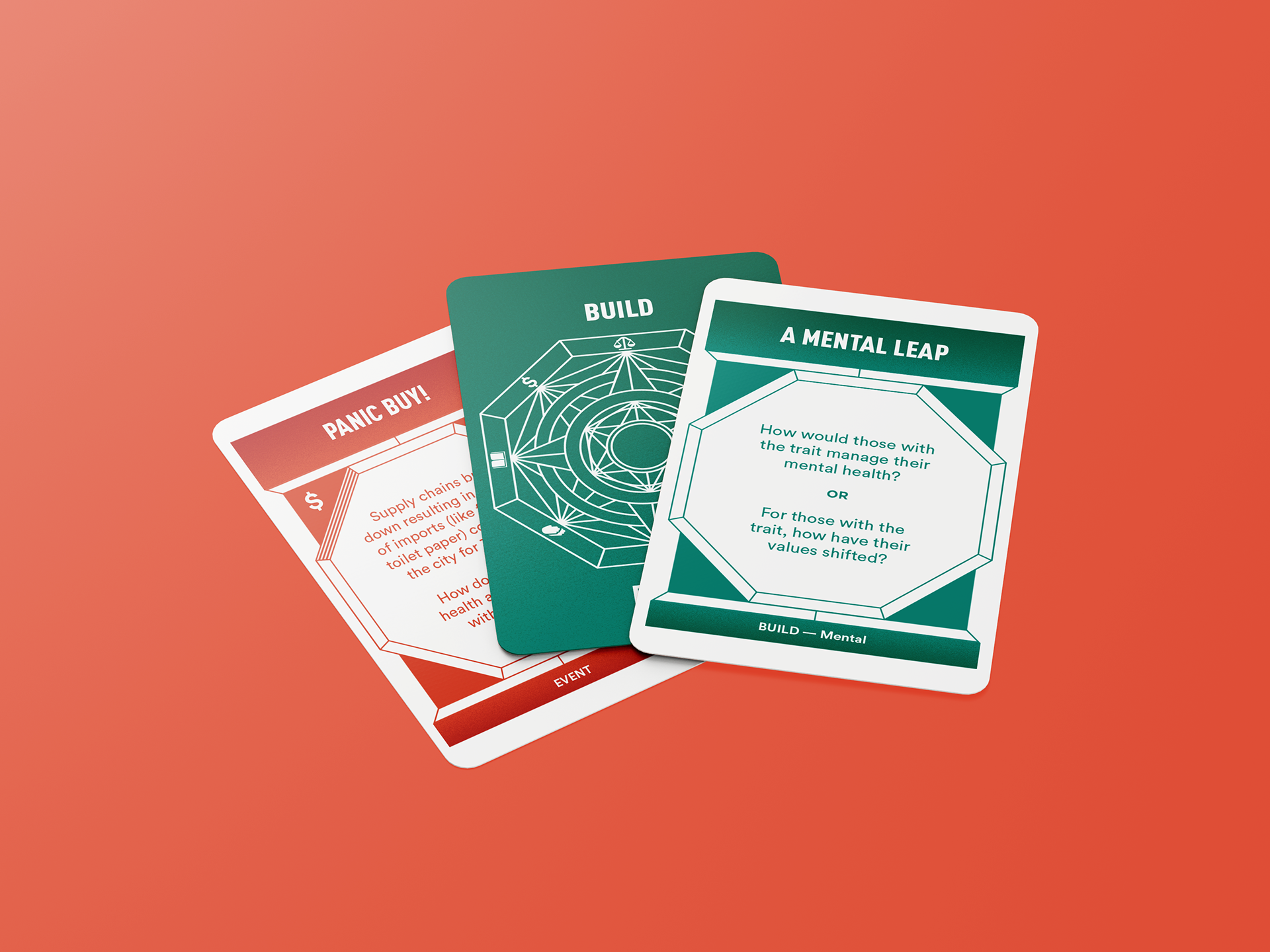To Our Health: A City of Harmony and Havoc is a collaborative worldbuilding, storytelling and mapping game designed to engage players in the complexities of health and wellbeing through building and interacting in a speculative future city set in 2050.
In Australia, despite modern advances in health and wellbeing, people continue to fall through the cracks of our health systems; there is shockingly inadequate support for people facing challenges such as depression, anxiety and dementia. These complex challenges have no easily identifiable cause, and may be linked to many social, emotional, spiritual, physical (and more) influences in a person’s life. To face these and future challenges, we must better understand how our health and wellbeing is connected to every aspect of our lives, so that we can design future systems to better accommodate complexity.
To Our Health consists of a rulebook, 52 prompt cards, summary and sign cards, and is an experience played over 3-4 hours to allow 4-6 players to deeply engage with the complexity of the world they create. Split into two Acts, players shift from building to interacting in their future city by responding to the prompt cards and mapping out their decisions.
Designed primarily for young adults, To Our Health recognises the many different relationships, interactions and feedbacks between systems like finance, politics, health, and their capacity to affect each other in expected and unexpected ways. It challenges players to think beyond single cause and effects, to seek out the many causes and consequences across these systems, and guides players to generate more integrated ways of influencing health and wellbeing in a future context.


Framework designed for worldbuilding within the game.
Rulebook for To Our Health: A City of Harmony and Havoc.
Some of the 13 Build Cards used in Act One: Genesis.
Sign Cards used to spur other players into doing. (Front and Back)
Summary of rounds and game, given to each player. (Front and Back)
The Trait is randomly picked and affects 25% of the player's collective home city.
Examples of the 39 Event Cards from Act Two: Simulation.
Icon and pattern system used on cards to guide players thinking to the framework.
This project was designed over the course of the 2020 Design in Visual Communication (Honours) Degree at the University of Technology Sydney, involving extensive design theory research, mapping, diagramming, experimental workshopping, alongside several rounds of prototyping and playtesting. Some of this process can be seen below.
One of the prototyping and playtesting sessions.




Special Thanks to:
Andrew Burrell
Zoe Sadokierski
Jacqueline Lorber Kasunic
Carmen Zeng
Mulanne Phan
Janey Li
Navira Trimansyah
and Peers & Playtesters,
Madi, Mike, Richard, Jack, Michael, Fiona, Eugenie & Hannah